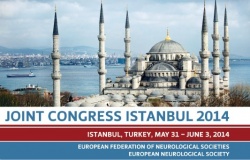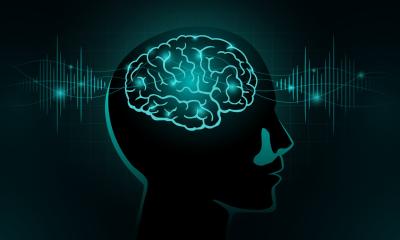Using brain waves to steer a wheelchair
At the Joint Congress of European Neurology in Istanbul, researchers from Austria and Belgium have presented a study exploring innovative methods for communicating with coma patients. Their aim is to be able to communicate with patients by detecting brain activity even in people with inhibited consciousness.

Istanbul, Turkey, from May 31 until June 3 2014
Direct communication between the human brain and a computer is a recurring theme in science fiction – but today it is one step closer to becoming reality. The hope for this technology is that it will benefit people who are unable to interact with their environment due to severe disability. “These are mostly people who have survived a coma, but who are in a minimally conscious state or suffer from locked-in syndrome,” Prof Steven Laureys from the Coma Science Group of the University of Liège explained at the Joint Congress of European Neurology in Istanbul. Sufferers of locked-in syndrome are fully conscious, but their bodies – including the muscles required for speech – are completely paralysed. Brain activity can be measured in all patients suffering from such conditions, just as it can in healthy people. This is achieved by electroencephalography (EEG) – a harmless and pain-free procedure. To a certain degree, activity flowing through the brain can be controlled voluntarily. When a person raises their arm, for example, a corresponding electrical signal is produced in a specific area of the brain – and in theory at least, the signal can occur whether the person is actually able to raise their arm or not. This electrical potential can now be measured and used as a communication signal. A more sophisticated method for recording brain activity, though more difficult to apply in everyday clinical operations, is functional magnetic resonance imaging (fMRI).
Obstacles to communication
The approach has met with initial success, but the real difficulties start once communication has been established. Many patients have poor vision, others have impaired hearing, while some are entirely dependent on their sense of touch. For this reason, the researchers from the University of Graz and the University of Liège attempted to use auditory and tactile cues, as well as motor imagery, to prompt patients to imagine raising their arm. The auditory method is used to determine whether the patient possesses the level of consciousness required for communication, and the other two approaches are intended for communication itself. In tests on a group of healthy subjects, the methods achieved 80 per cent accuracy; the remaining 20 per cent is accounted for by factors such as individual variations in EEG readings from the test subjects.
Initial studies under way
According to Prof Laureys, “The basic action is for a patient to say ‘yes’, for example by concentrating on their left arm. The next step is to expand their vocabulary to include ‘yes’ and ‘no’. Gradually, progress is made until the patient is able to move the cursor on a screen in this way. Our hope is that it will be possible to use this method, say, to manoeuvre a wheelchair. At present, though, there are still significant limits to the method, since the experiments achieved excellent results with healthy subjects, but in patients with severe brain damage other problems have to be overcome – for example, patients often have problems concentrating for extended periods, or have impaired intellectual capacity.” However, the first studies with patients have already started. They are expected to be especially welcomed by people with locked-in syndrome, as the various exercises and tests will be a distraction from the everyday routine in hospital. But researchers are confronted with major challenges when it comes to patients with minimal consciousness: it can be difficult in such cases to distinguish between conscious reactions and chance activity picked up by the EEG.
03.06.2014







